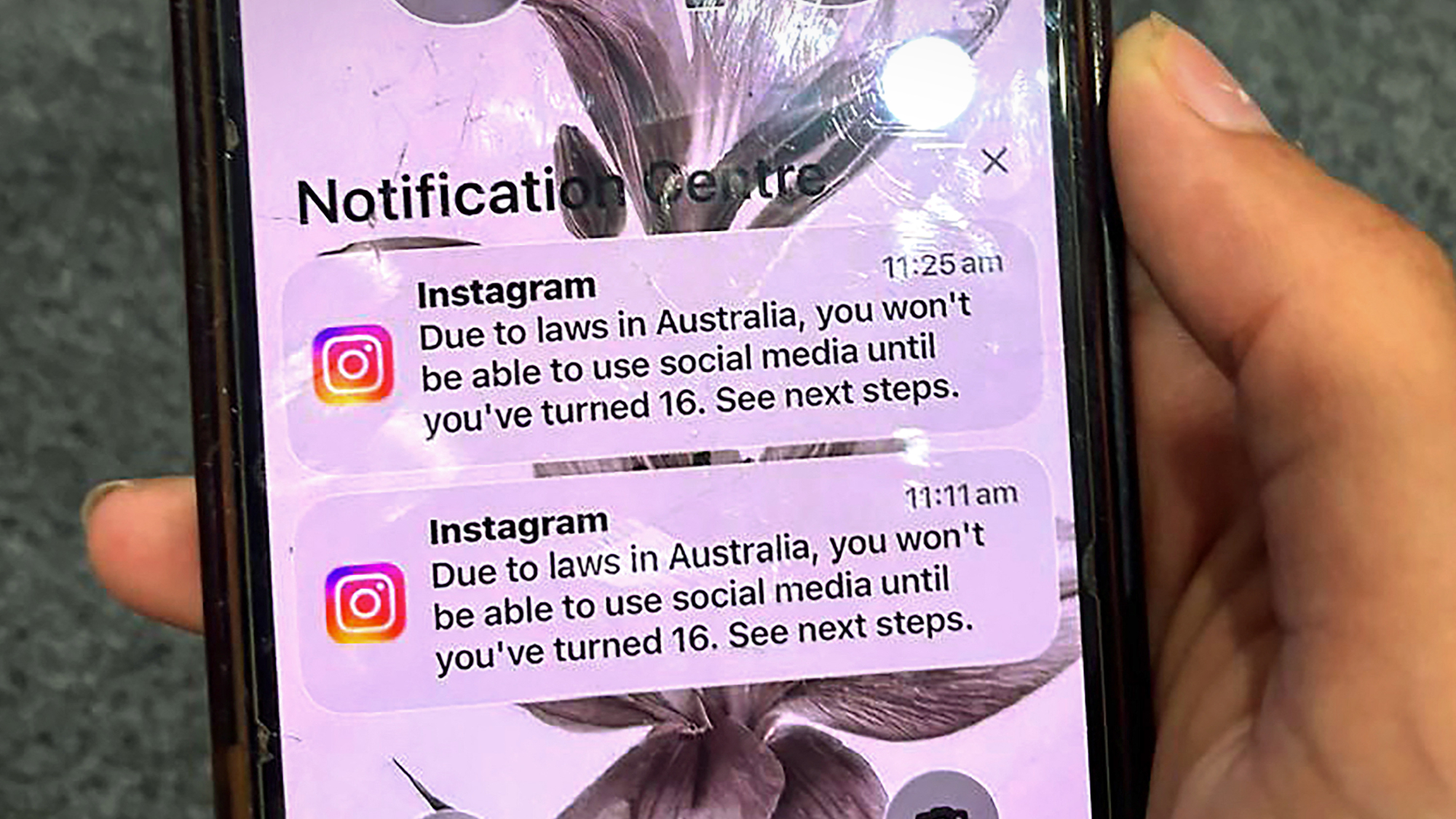Big Brother is watching: Wi-Fi signals can track you in your home
It could open the door to mass surveillance


Comcast's Xfinity has introduced a new feature in its internet routers called Wi-Fi Motion, which uses Wi-Fi signals to detect movement in your home, whether from people, pets or other moving objects. And many are concerned about the potential breach of privacy.
A peek inside
When enabled, Wi-Fi Motion "creates an oval-shaped area of Wi-Fi coverage, and anything that disrupts those signals may be detected as motion," said TechRadar. The feature can also work in tandem with three other stationary Wi-Fi using devices, like a TV or a printer, to expand the detection range. When motion is detected, you can receive a notification. This technology "works across various rooms and floors, but it cannot pinpoint where the motion took place, and it will just tell you which device spotted it."
At first glance, Wi-Fi Motion appears to be an extra security measure for your home. But many view the technology as a threat to their privacy. "The concept of my own home's Wi-Fi tracking the location of everybody as they move from kitchen to living room to toilet does the opposite of providing peace of mind," said Matt Jancer at Vice.
The Week
Escape your echo chamber. Get the facts behind the news, plus analysis from multiple perspectives.

Sign up for The Week's Free Newsletters
From our morning news briefing to a weekly Good News Newsletter, get the best of The Week delivered directly to your inbox.
From our morning news briefing to a weekly Good News Newsletter, get the best of The Week delivered directly to your inbox.
Using WI-Fi to track movement can provide a powerful form of surveillance. "Unlike visual systems, they can operate regardless of lighting conditions, pass through walls and avoid capturing identifiable images, making them appear more privacy-conscious on the surface," said Interesting Engineering. However, a "person's body alone can create a distinct enough pattern in Wi-Fi signals to enable reidentification," which "raises new concerns about passive tracking."
There are also concerns about what's done with the collected motion data. Comcast claims it "does not monitor the motion and/or notifications generated by the service" but also says it "may disclose information generated by your Wi-Fi Motion to third parties without further notice to you in connection with any law enforcement investigation or proceeding," said Xfinity on its website. In addition, if the data "falls into the wrong hands, a lot of sensitive information could potentially leak out, including data on when you are home and when you are not," said TechRadar.
All eyes on you
The use of Wi-Fi for tracking is not a new idea. Almost a decade ago, scientists were able to create a 3D map of a building using Wi-Fi signals. But employing Wi-Fi as a surveillance tool is still merely a concept.
A study published as a preprint on arXiv details how Wi-Fi signals can be used to identify individual people. The system called WhoFi can "generate a unique biometric identifier based on how a person's body interacts with surrounding Wi-Fi signals," said Interesting Engineering. Then, the technology can "track them in physical space and re-identify them in the same or a different location based on the way Wi-Fi signals bounce off and through them," said PC World. A similar system was introduced in 2020 with a 75% accuracy rate; WhoFi has an accuracy rate of over 95%.
A free daily email with the biggest news stories of the day – and the best features from TheWeek.com
With Wi-Fi's potential to institute mass surveillance, allowing an internet service provider to track movement inside a home may be considered a first step toward that goal. Xfinity's technology "invites a larger debate on privacy — when exactly enough is enough and how much data we are all willing to share with third parties," said TechRadar. After all, Wi-Fi is now ubiquitous in almost all spaces, both public and private.
Devika Rao has worked as a staff writer at The Week since 2022, covering science, the environment, climate and business. She previously worked as a policy associate for a nonprofit organization advocating for environmental action from a business perspective.
-
 7 bars with comforting cocktails and great hospitality
7 bars with comforting cocktails and great hospitalitythe week recommends Winter is a fine time for going out and drinking up
-
 7 recipes that meet you wherever you are during winter
7 recipes that meet you wherever you are during winterthe week recommends Low-key January and decadent holiday eating are all accounted for
-
 Nine best TV shows of the year
Nine best TV shows of the yearThe Week Recommends From Adolescence to Amandaland
-
 Data centers could soon be orbiting in space
Data centers could soon be orbiting in spaceUnder the radar The AI revolution is going cosmic
-
 What is Roomba’s legacy after iRobot bankruptcy?
What is Roomba’s legacy after iRobot bankruptcy?In the Spotlight Tariffs and cheaper rivals have displaced the innovative robot company
-
 AI griefbots create a computerized afterlife
AI griefbots create a computerized afterlifeUnder the Radar Some say the machines help people mourn; others are skeptical
-
 The robot revolution
The robot revolutionFeature Advances in tech and AI are producing android machine workers. What will that mean for humans?
-
 Australia’s teen social media ban takes effect
Australia’s teen social media ban takes effectSpeed Read Kids under age 16 are now barred from platforms including YouTube, TikTok, Instagram, Facebook, Snapchat and Reddit
-
 Texts from a scammer
Texts from a scammerFeature If you get a puzzling text message from a stranger, you may be the target of ‘pig butchering.’
-
 Separating the real from the fake: tips for spotting AI slop
Separating the real from the fake: tips for spotting AI slopThe Week Recommends Advanced AI may have made slop videos harder to spot, but experts say it’s still possible to detect them
-
 Inside a Black community’s fight against Elon Musk’s supercomputer
Inside a Black community’s fight against Elon Musk’s supercomputerUnder the radar Pollution from Colossal looms over a small Southern town, potentially exacerbating health concerns
